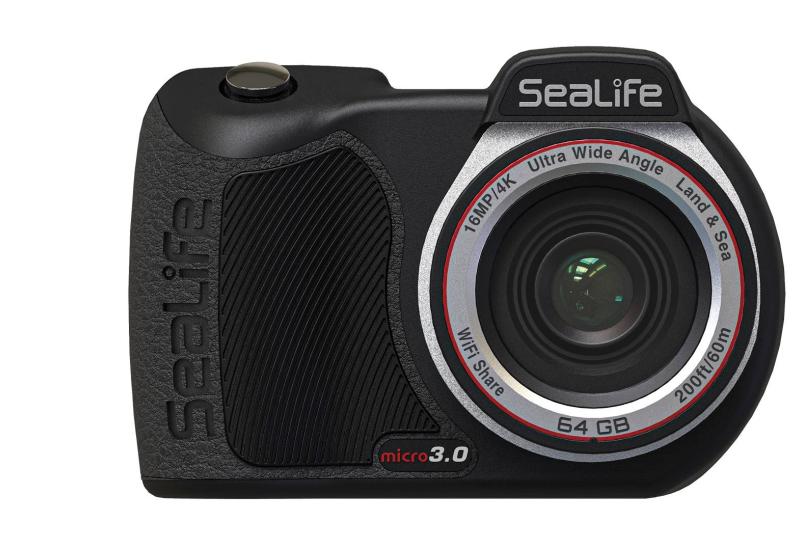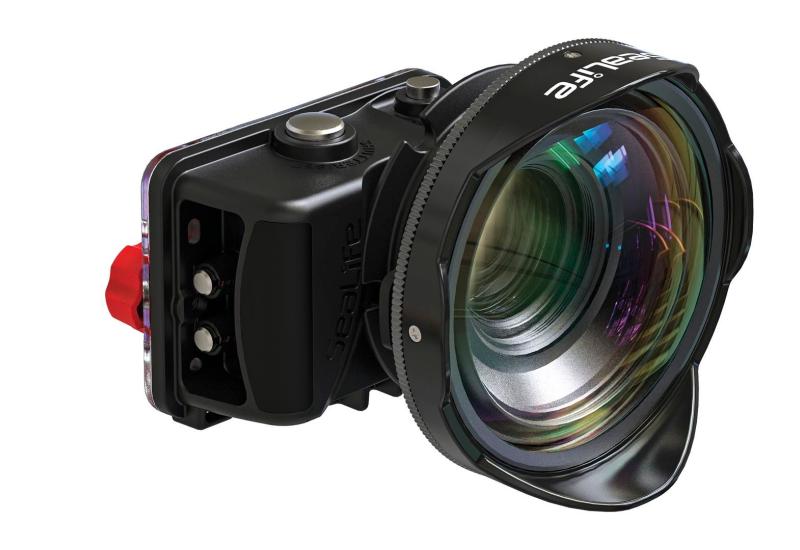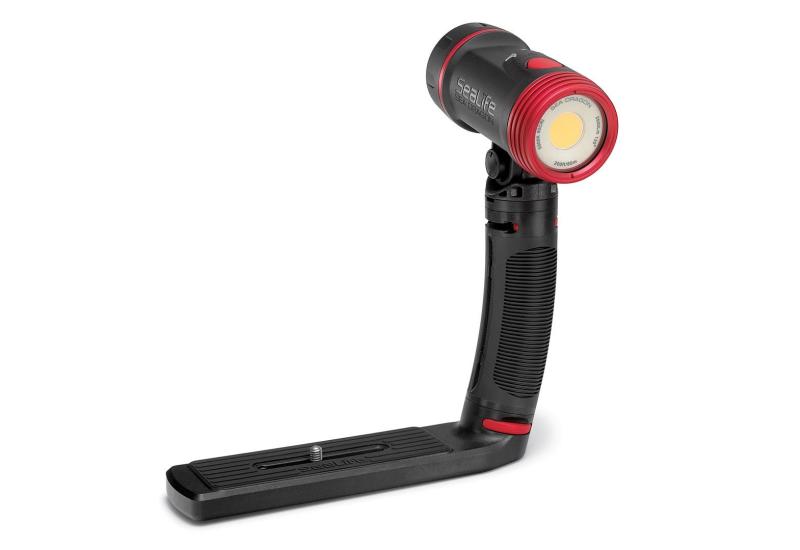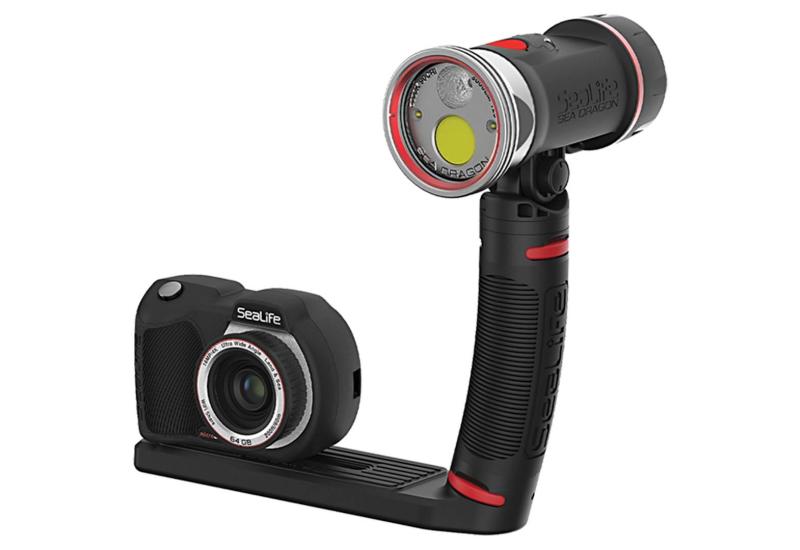15 Best Dive Lights Tested By ScubaLab

Jon WhittleFor the latest ScubaLab Gear Review, we tested 15 of the best new dive lights on the market to help you find the one that suits your diving needs best. Separated into three categories, these lights were put through a series of objective and ergonomic tests to provide the most unbiased results in the industry. And, as a bonus, we gave you the scoop on three cool gadgets to light up your next dive that much better!
How We Test Dive Lights
ERGONOMIC TESTING
Ergonomic tests were conducted by a team of test divers at Blue Grotto Dive Resort in Williston, Florida, using the lights underwater with test scoring sheets. Divers rated each light on a scale of 1 (poor) to 5 (excellent) for six factors, and were also asked to record their comments about the six test areas as well as any other observations about the performance of a light. (Check out the behind-the-scenes gallery of the in-water tests)
| CATEGORY | CRITERIA |
|---|---|
| Ease of Use | Are switches and controls intuitive and easy to operate; ease of selecting power levels, emergency flash, etc. |
| Comfort/Security of Grip or Mount | Size and shape of grip or mount; weight, balance and ergonomics of the light |
| Beam Size and Shape | Usefulness of the beam underwater |
| Light Output | Brightness, color and quality of the beam |
| Power Levels | The ability to regulate brightness in useful increments |
| Use as a Primary Light | The light’s usefulness as a primary light for night dives |
OBJECTIVE TESTING
Photometric testing was conducted at Wilger Testing Co., an accredited, independent facility in Sarasota, Florida. Lights were tested using an integrating sphere, an industry-standard testing device that measures a light’s total output in lumens without regard to its beam angle.
To gauge the output and the burn time of lights, each light was tested twice; once with a fully charged (if rechargeable) or new battery (if disposable), and again after discharging for a continuous 60 minutes. Because dive lights are designed for use in water, many will electronically reduce their output after a brief period of burning out of water to avoid overheating and damaging circuitry. For this reason, measurements taken in the sphere were conducted immediately after turning on each light. Following the first test with full batteries, all lights were recharged or batteries were replaced, then allowed to burn on full power underwater for one hour, then tested again.
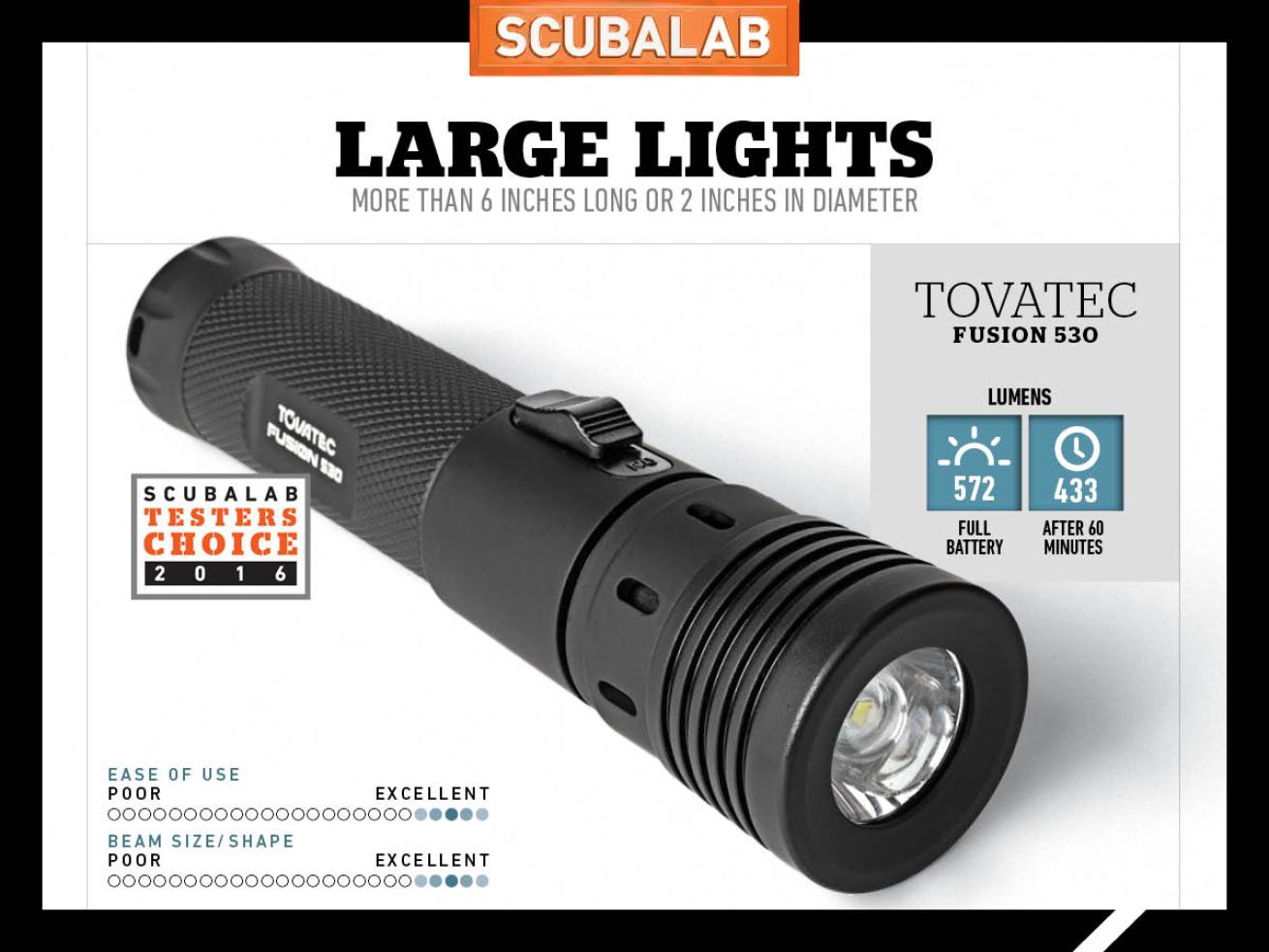
Jon WhittleThis comfortable, easy to use light is our Testers Choice for large lights.
The race doesn’t always go to the swiftest, and choosing a dive light isn’t only about how much light it pumps out. Intuitive operation, a practical choice of power levels, comfortable ergonomics, convenience, flexibility: These are all part of the equation of the right dive light. In our test, that math led to the Fusion 530. Its beam is plenty powerful, and the sliding zoom head lets you adjust it to any width from 100 degrees to 12 degrees. The magnetic switch couldn’t be simpler, and while its size put it in our larger category (by a fraction of an inch), it fits in anything but a very small BC pocket. The textured rubbery coating over the aluminum body makes it comfortable in the hand, and the rechargeable Li-ion battery is a practical and convenient power solution. The Fusion 530 is our Testers Choice in this category.

Jon WhittleThe dive light offers a bright powerful spot beam that is simple to operate.
The Nova 720 is a mix of simplicity and sophistication. It’s powered by three C batteries — the housing for which makes it the longest light here at a shade over 9 inches — and operates with a simple twist-on, twist-off light head. But it also has a nicely finished all-aluminum construction that’s rated waterproof to 300 meters and an impressively powerful, concentrated spot beam. (There’s also a wide version available with an 80-degree beam.) Divers gave very good ratings for the beam’s output and usefulness, and also for the Nova 720’s ease of operation and comfort, although those with smaller hands found it a little on the bulky side. One thing divers wanted more of was options in power levels (plus a flash mode), finding the choice of full or half power of that bright beam a little too much for close-up work.
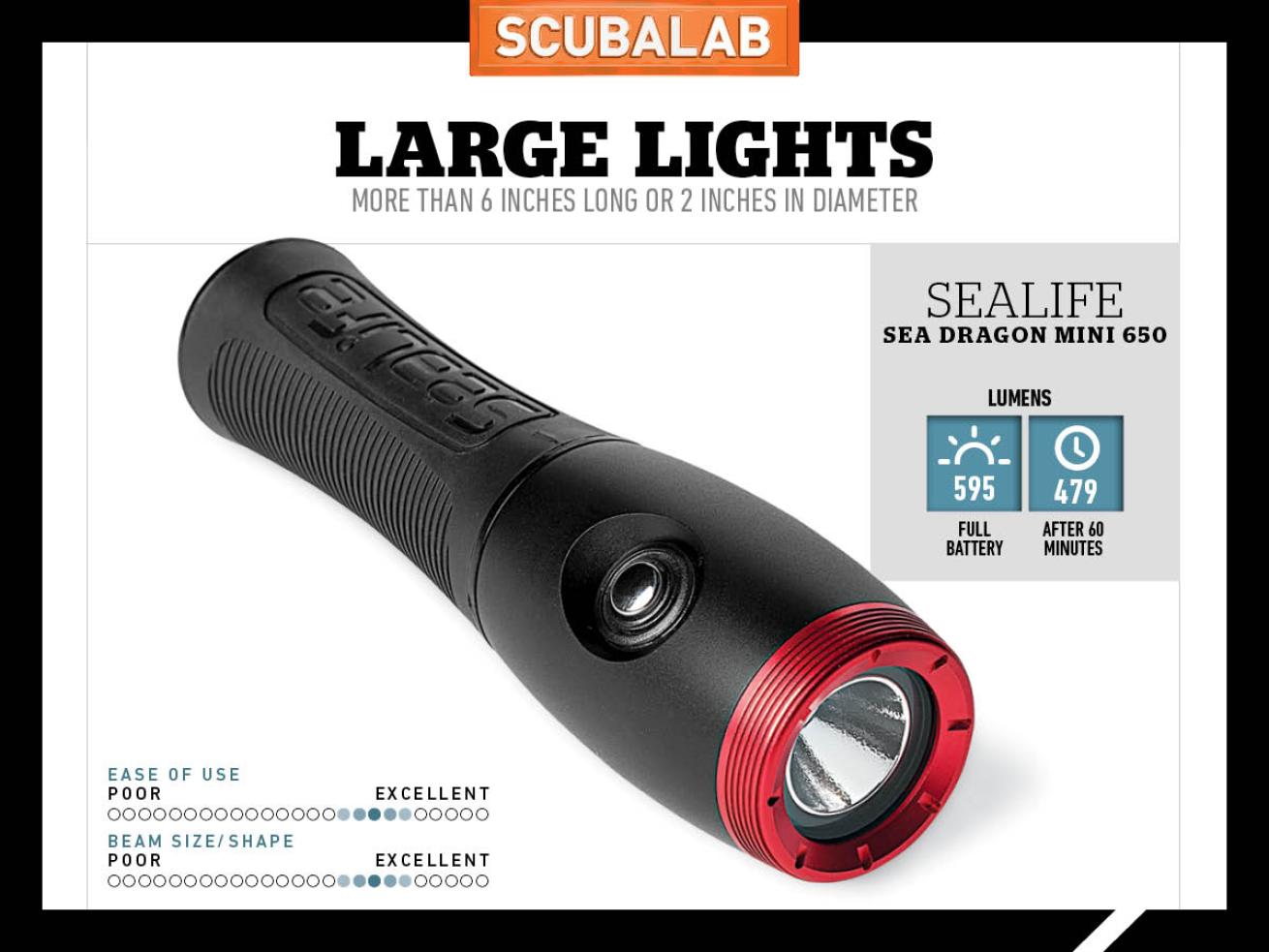
Jon WhittleDivers like this intuitive and rugged light.
The Sea Dragon Mini 650 has refined the essential elements that we like in a light: intuitive, one-handed operation, rugged design and construction, a comfortable grip, and plenty of light in a practical, 15-degree spot beam (a 120-degree flood version is also available). And while it fell (by about a quarter inch) into our admittedly somewhat arbitrary “large light” category, the truth is, it still fit easily in our BC pockets. No surprise test divers rated the Mini 650 very good for ease of use, light output and ergonomics. In fact, the only category where its rating dropped to good was in the ability to tone down its light: It’s so bright that some test divers felt it could use more than its two available power levels. Otherwise divers loved the Mini 650’s simple operation and appreciated touches like the lighted switch that changes color to indicate battery level — a simple, elegantly effective solution.
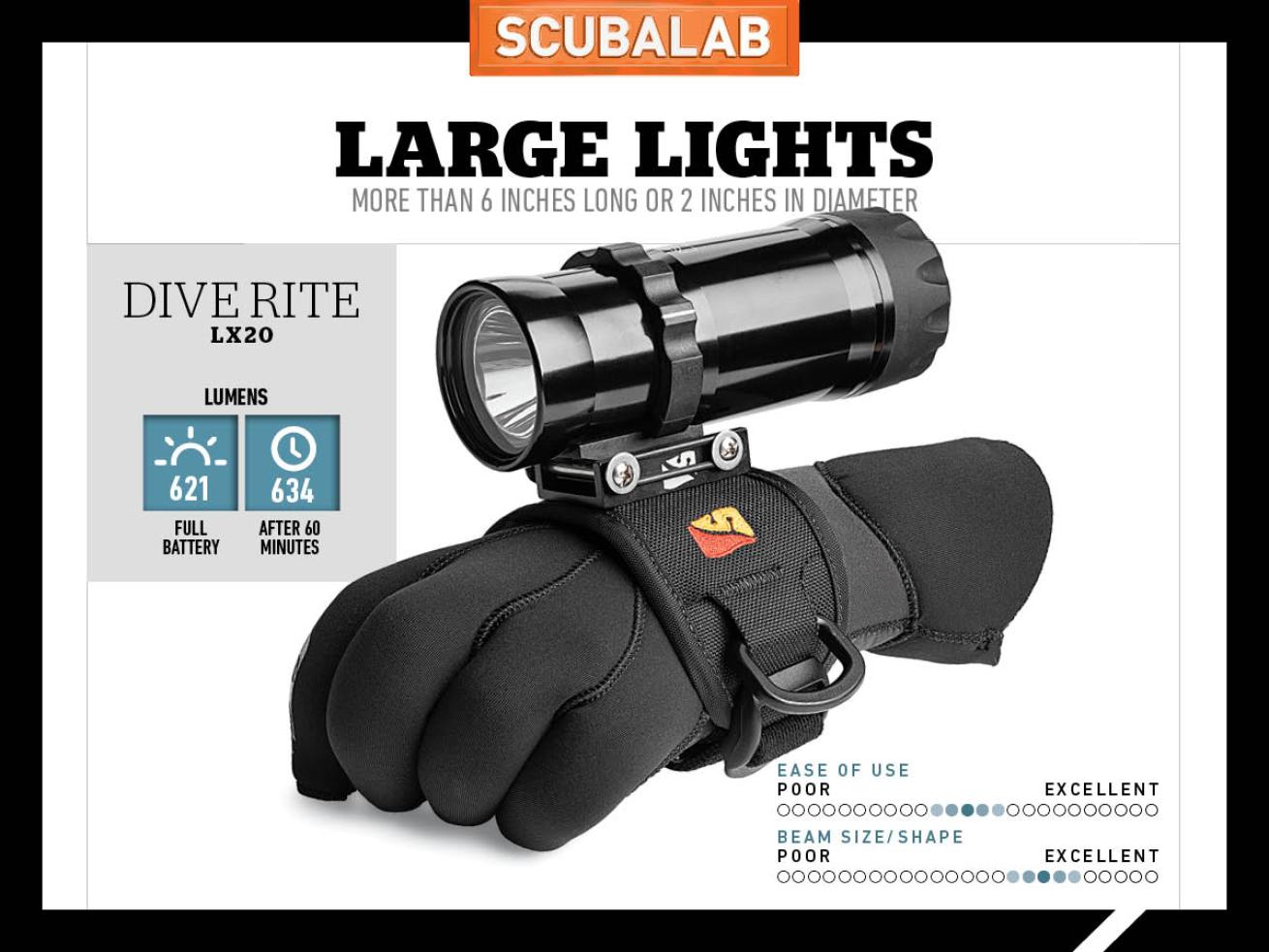
Jon WhittleThis large dive light produces a powerful beam that earned it top scores among test divers.
While it’s a little beefier than most of the lights here, the rugged LX20 still weighs less than 1.5 pounds with its (very comfortable) hand mount and is not much bigger than a can of Red Bull. That turns out to be an apt comparison because the LX20 has boatloads of energy, thanks to its four rechargeable Li-ion batteries. In fact, after burning on high for an hour in our lab test, the LX20 was putting out even more light than when the batteries were fresh, as though it were just getting warmed up. Test divers wished it had more than two power levels, and some found that the magnetic ring switch took some getting used to. But its intense, very concentrated, 6-degree beam produced a penetrating light that sliced through even murky water, earning the LX20 the top score from test divers for the quality of its beam.
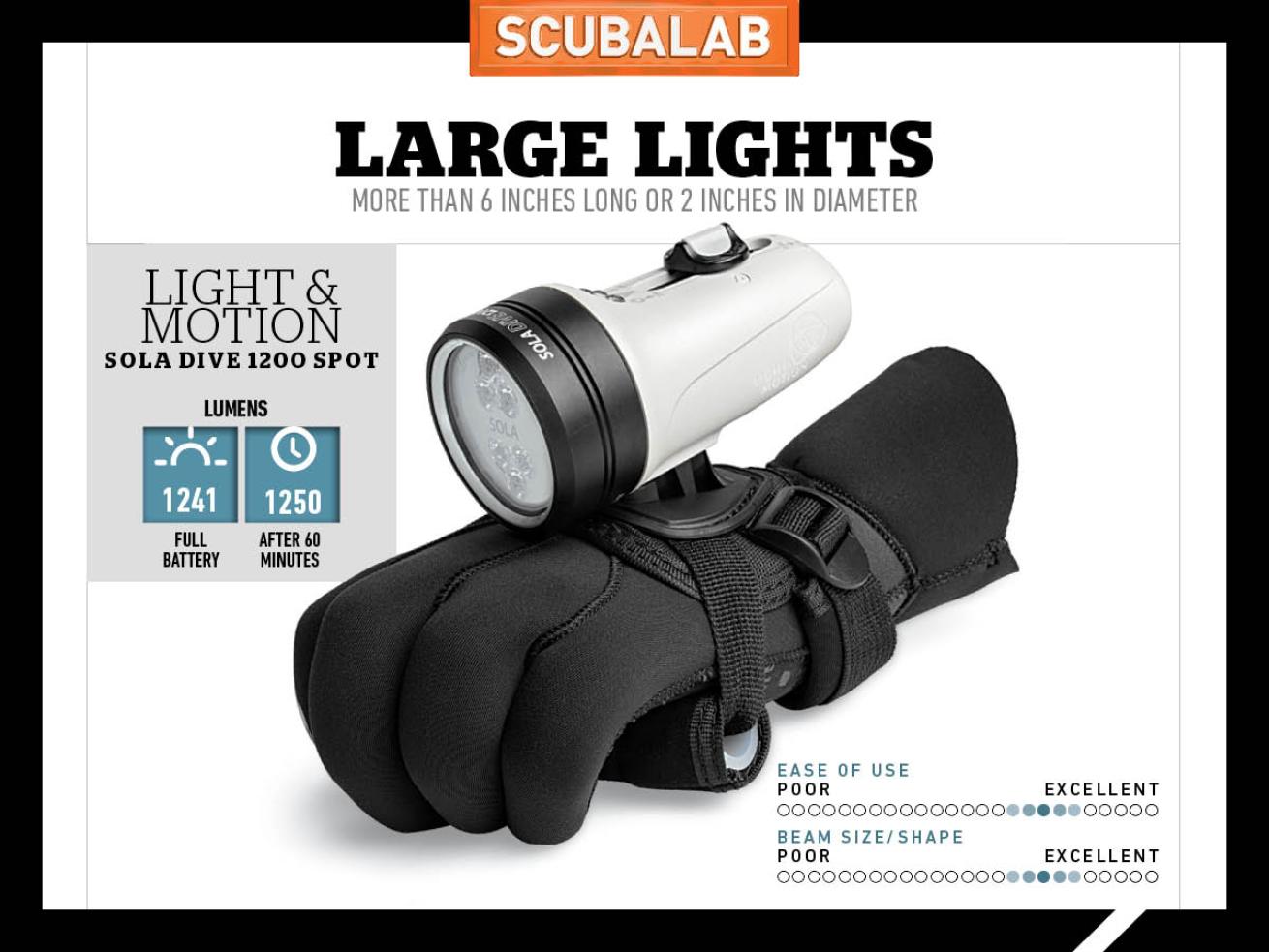
Jon WhittleThree indicator lights change colors to display power and battery levels on this light.
Light & Motion has basically taken a video light, given it a 12-degree spot beam, and installed it on a very good hand mount (a pistol grip is also available). The result is a light with the sort of design and build quality that reminds us of the space program. The sliding switch with integral lock (twist it 90 degrees), the three indicator lights that change colors to display power and battery levels, the external ports that let you charge the factory-sealed Li-on battery by simply plugging in the charger — it seems like it could travel to Mars and back. Some divers felt an even tighter beam would cut through murk better, and a few thought it could have used an even lower minimum-power setting. No dive light we tested put out more light; its output was slightly higher after an hour of running; and its controls and indicators were thoroughly intuitive.
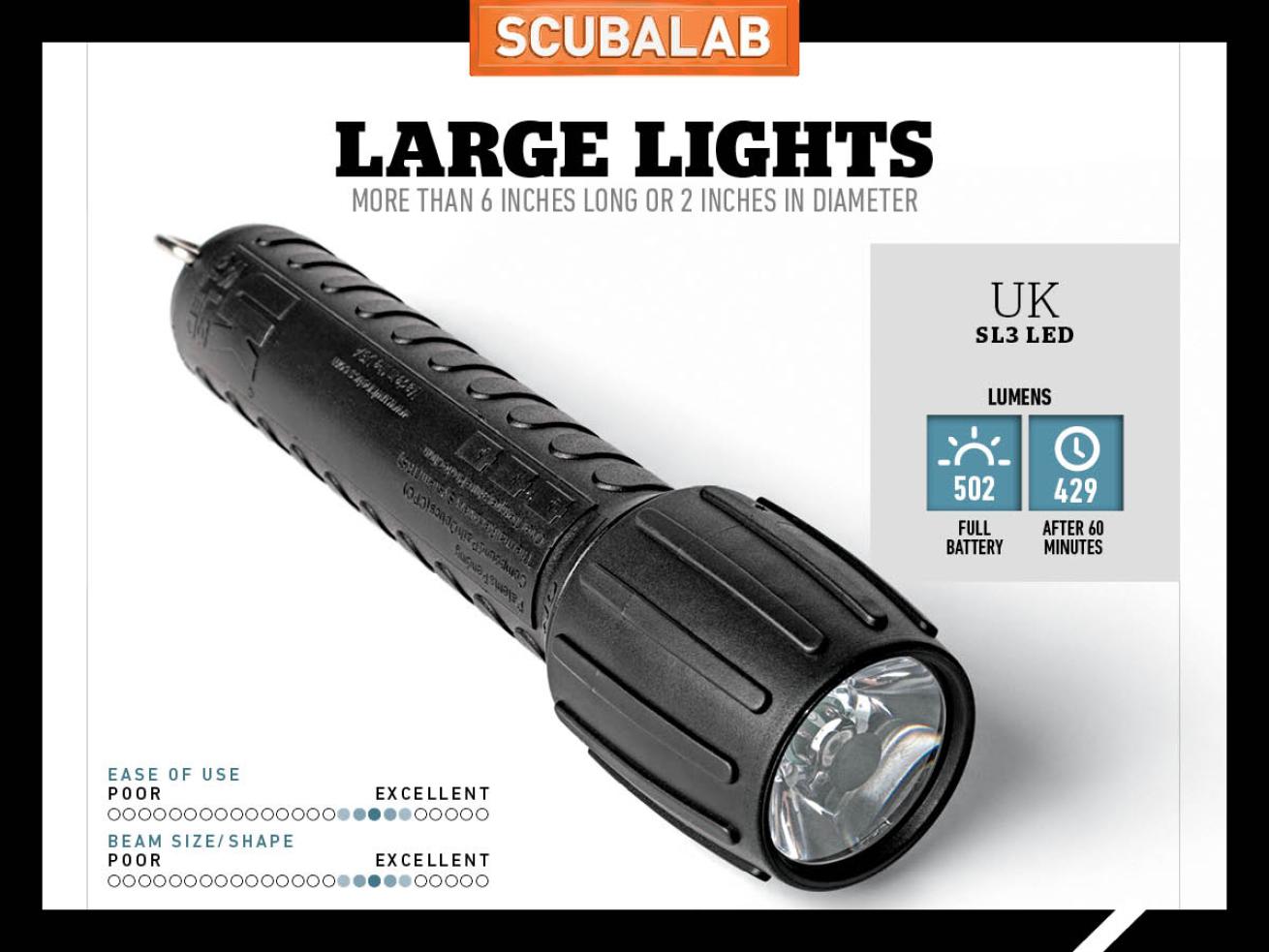
Jon WhittleSimple and powerful divers were impressed by this dive light's performance.
A couple of divers cracked that the SL3, with its black plastic construction and basic appearance, looked like the kind of light you’d carry in your glove box to change a tire. But our test found that the light’s capabilities were nothing to sneer at. In the lab, the SL3’s light output was well above its advertised 425 lumens, even after an hour of operation — and even if it hadn’t been, this light would easily win a most-lumens-per-dollar competition. It’s true that lights don’t get simpler than the SL3, with its single power level, twist-on operation and lack of flash mode. But that plastic housing is rated waterproof to 500 feet. And while it’s billed as a backup light, most test divers felt the SL3 could serve as a suitable primary light for most general dive use.
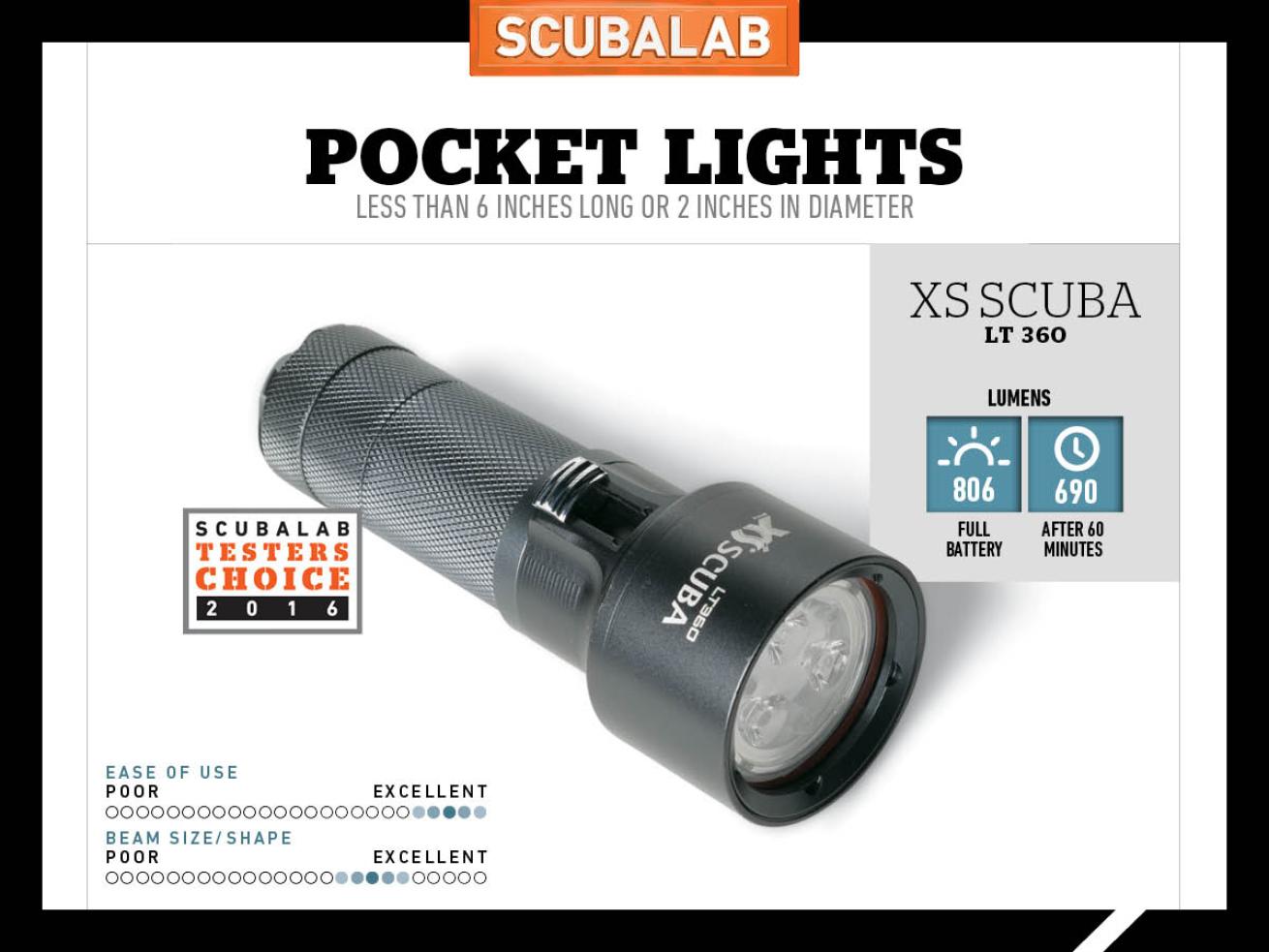
Jon WhittleDivers loved this light's adjustable dimmer switch and named it Testers Choice for our small light category.
Many new dive lights are so powerful that without multiple power settings, they’re simply too bright for comfort in close-up work, such as checking your own gear or writing on a slate. The LT 360 solves that problem with a novel magnetic dimmer switch that’s totally intuitive and offers the widest possible range of power settings. Operation is simplicity itself — slide it forward for on, and the more you slide it, the brighter it gets. And the LT 360 is very bright. Our lab test showed results a bit below the claimed max output, but the reason is that the switch slides back just a bit from its farthest-forward setting when you remove your thumb (necessary for our lab testing, which required putting the light inside a sealed sphere). Taking high scores for ease of use, beam quality and light output, the LT 360 is our Testers Choice in this category.
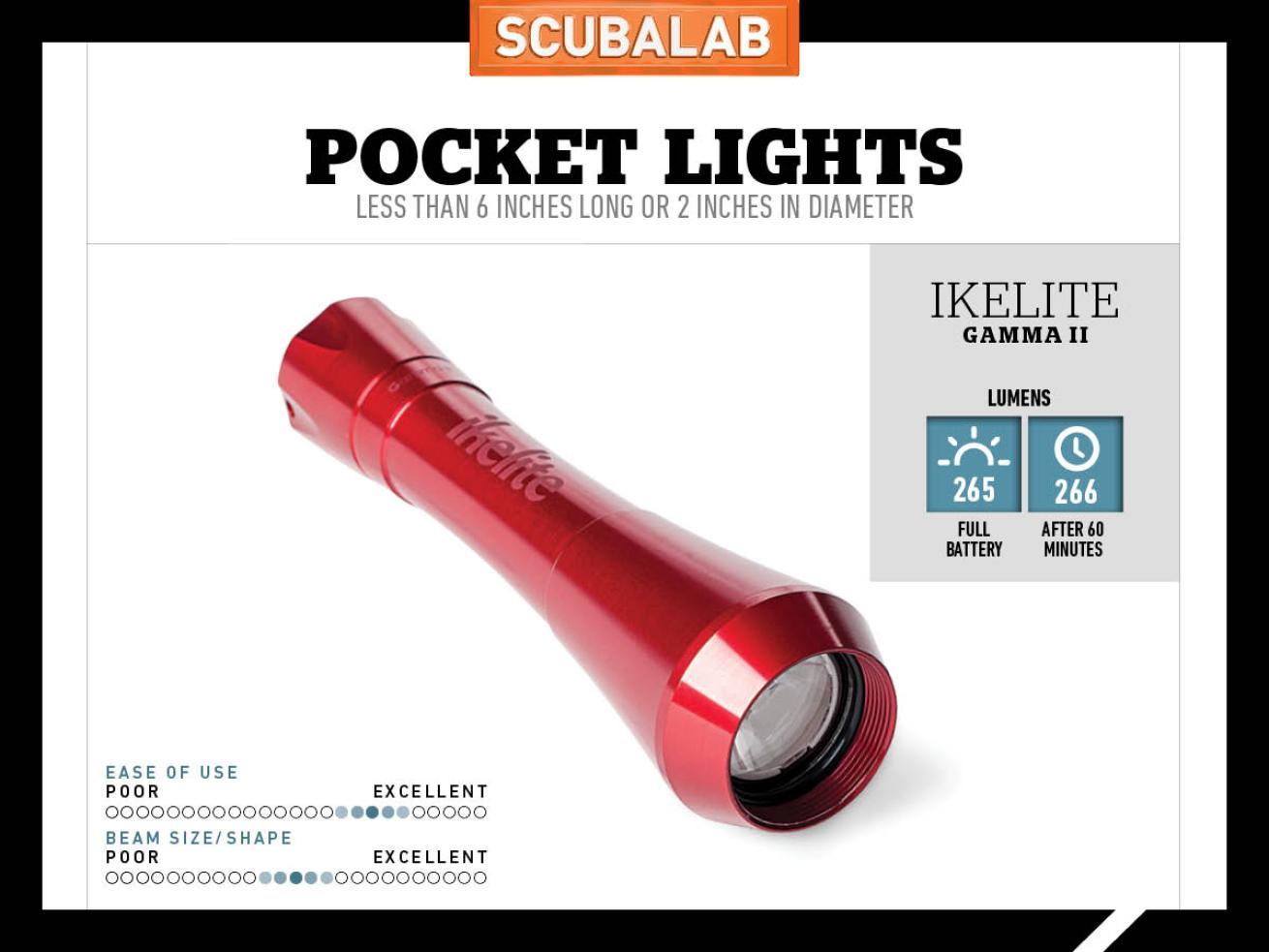
Jon WhittleCompact, comfortable, and reliable. This dive torch makes an excellent backup light.
Sometimes the shape and feel of a piece of gear — especially one that spends a lot of time in your hand — hits a sweet spot, and that was the definitely the case with the Ikelite Gamma II. Its narrow, concave aluminum housing seemed to fit well in hands large and small, with or without gloves. “I really like the shape, weight and feel of it,” was a typical test-diver comment. Not surprisingly, the Gamma II tied the top score in its category for comfort and security of the grip. It was also rated very good in the ease of operation category, with its mechanical tail switch that turns it on when partially depressed and locks it when pushed fully. Designed primarily as a backup light, it’s not as bright as some of the other lights we tested. But its easy operation, smooth, no-snags finish and trim design make it a very handy backup light.
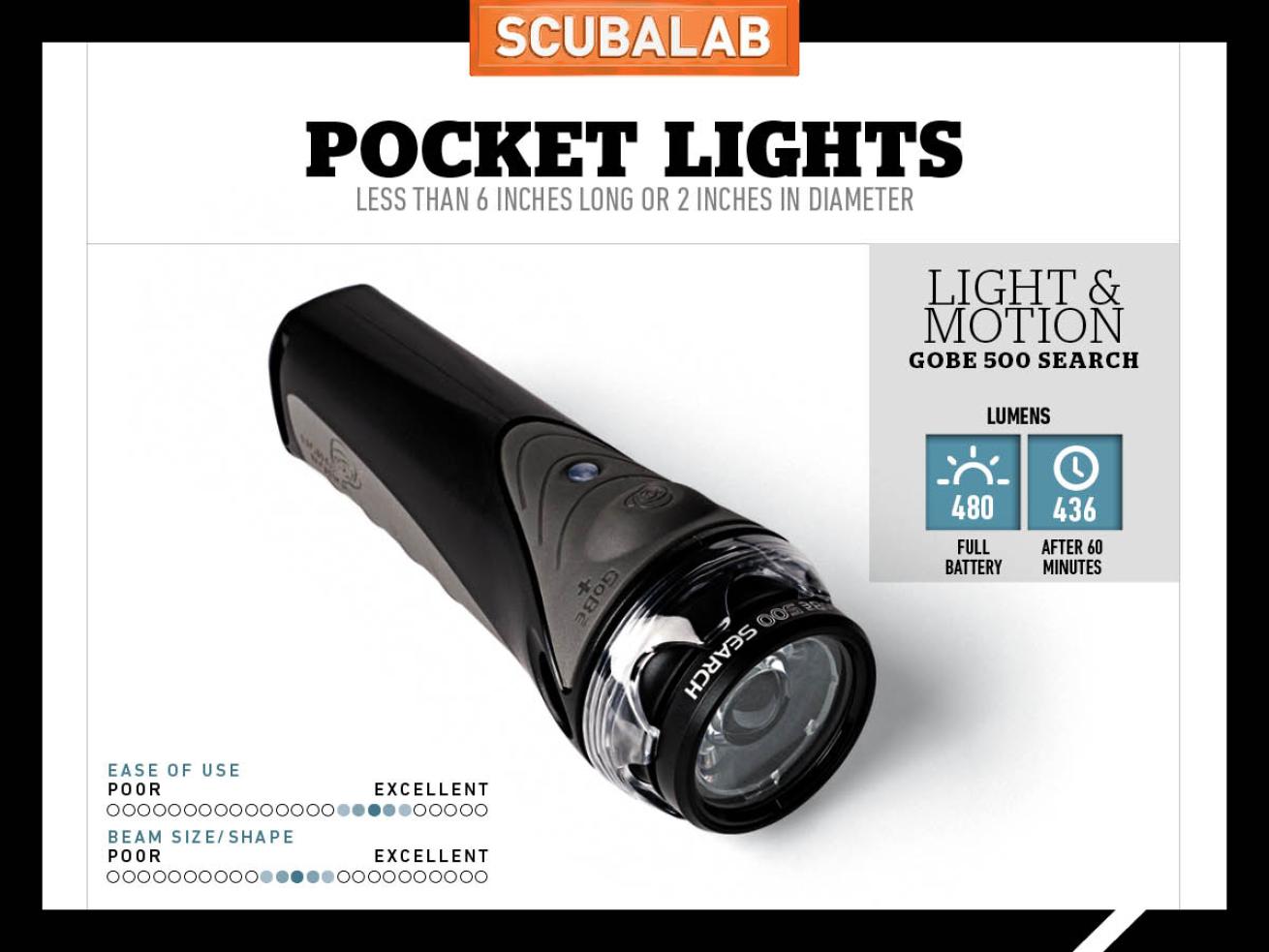
Jon WhittleThis tiny light packs a powerful beam. It's lowest 35-lumen mode burns for up to 36 hours.
Small and powerful, the GoBe has a penetrating 8-degree spot beam. It has four power levels; the lowest, a 35-lumen extended operation mode, is rated to burn 36 hours. The magnetic switch lights to double as a battery indicator that changes from green to yellow to red, and then blinks as the battery level falls. Divers rated the GoBe very good for light output and ease of operation, though it took some a few times to remember the sequence (press for on/off and main power settings; hold down three seconds for extended operation and SOS flash). It tied the top score in its category for comfort, thanks to the rubbery pads that provide a firm, comfortable grip. It recharges its factory-sealed battery with a no-fuss clip-on charger, and it’s threaded to attach a ball or other photo mounts.

Jon WhittleDivers were impressed by this light's brilliant, tight beam and the high quality of construction.
The Nova 720R is both similar to and different from its bigger brother. It shares the twist-on operation with two power levels, and despite its smaller size, it put out even more light than the larger Nova 720. Since the light heads of the two models appear to be identical, we suspect any performance difference has to do with their power sources; the 720 uses three C batteries, while the 720R uses a single 18650 Li-ion rechargeable. That also explains their size difference: The 720R is more than 3 inches shorter, at just 5¾ inches, and only about an inch in diameter at its narrowest point. As with the larger model, we wished it had more than two power levels, and perhaps a flash mode, but we were impressed by its brilliant, tight beam, high build quality and simplicity of operation. It squeezes a surprising amount of useful light into a very compact package.
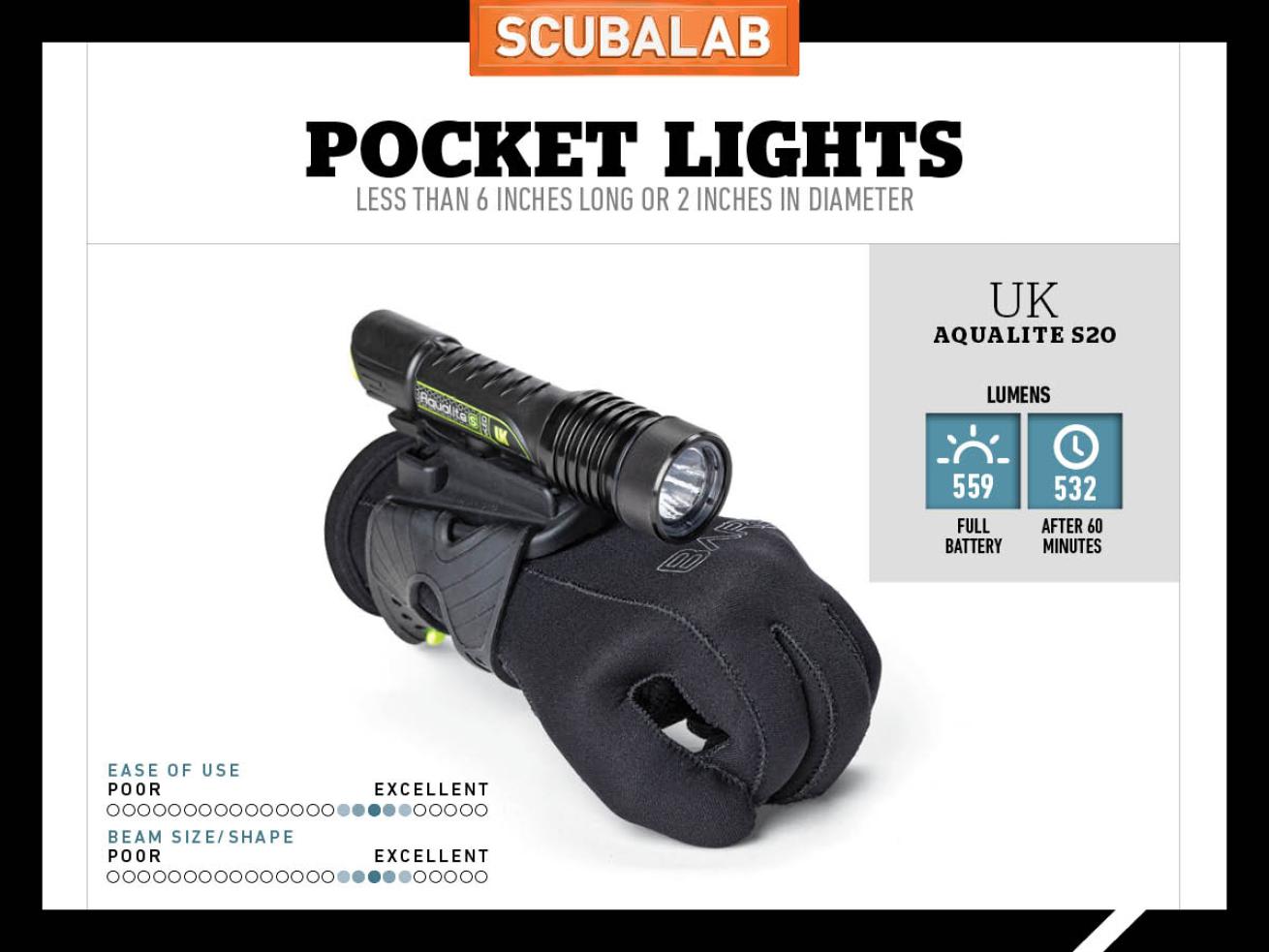
Jon WhittleOne of the smallest lights in our test was also the most versatile.
The Aqualite S20 is among the most compact lights here, but it’s powerful enough to be a primary. It can be used as a handheld, clipped to a hand mount or bolted to an assortment of camera mounts with its two threaded attachment points. You can change it from spot to flood or even UV beam by screwing on an accessory light head. We tried it with the standard 20-degree spot beam and the included rubber hand mount, which took some fiddling around to adjust and fit, but once in place was quite comfortable and secure (the quick-release features that allow the light to snap off is very convenient). The tail switch is easy to operate and toggles between well-spaced power levels (100, 50 and 15 percent) that earned a top score for ability to regulate output. Test divers found the Aqualite S20 powerful, compact and versatile.
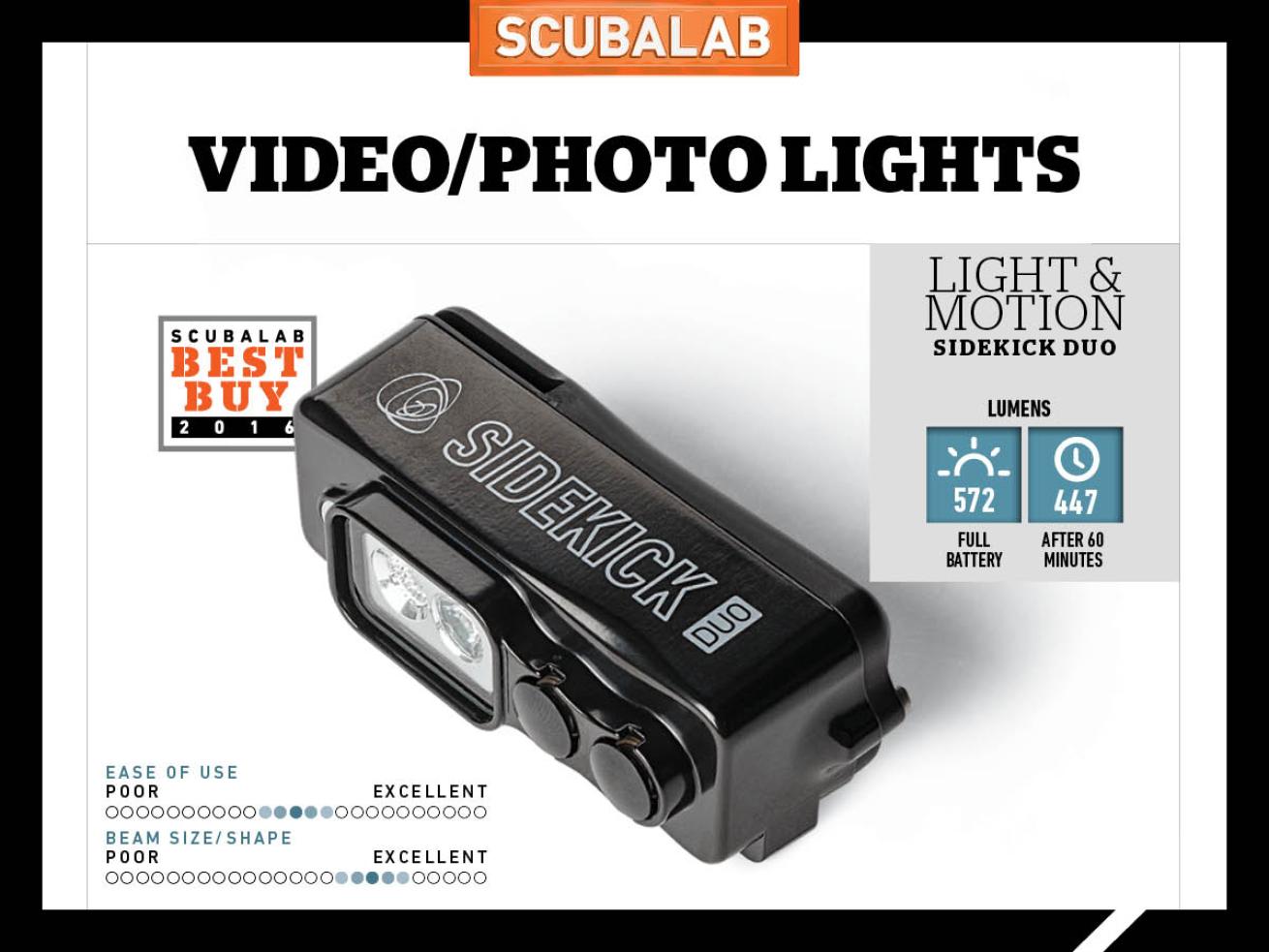
Jon WhittlePowerful, handy, and affordable. This dive light proves that good things can come in small packages.
The Sidekick Duo seems too good to be true: It has 600 lumens, spot and flood beams, and it’s smaller than a GoPro. But good things can come in small packages, and the 90-degree flood and 23-degree spot beams are perfect for POV camera work. It took a few tries to master the two-button operation (one for on/off and one to toggle between spot and flood) but it’s easy once you get the hang of it. The Sidekick comes with an adapter that bolts to the bottom mount of any model GoPro Hero, but even better is the available Dive Arm Kit ($30) with a short flex-arm mount. Nicely made with an aluminum housing rated for 60 meters and a factory-sealed Li-ion battery, the little Sidekick is powerful, handy and affordable. It’s our Best Buy in this category.
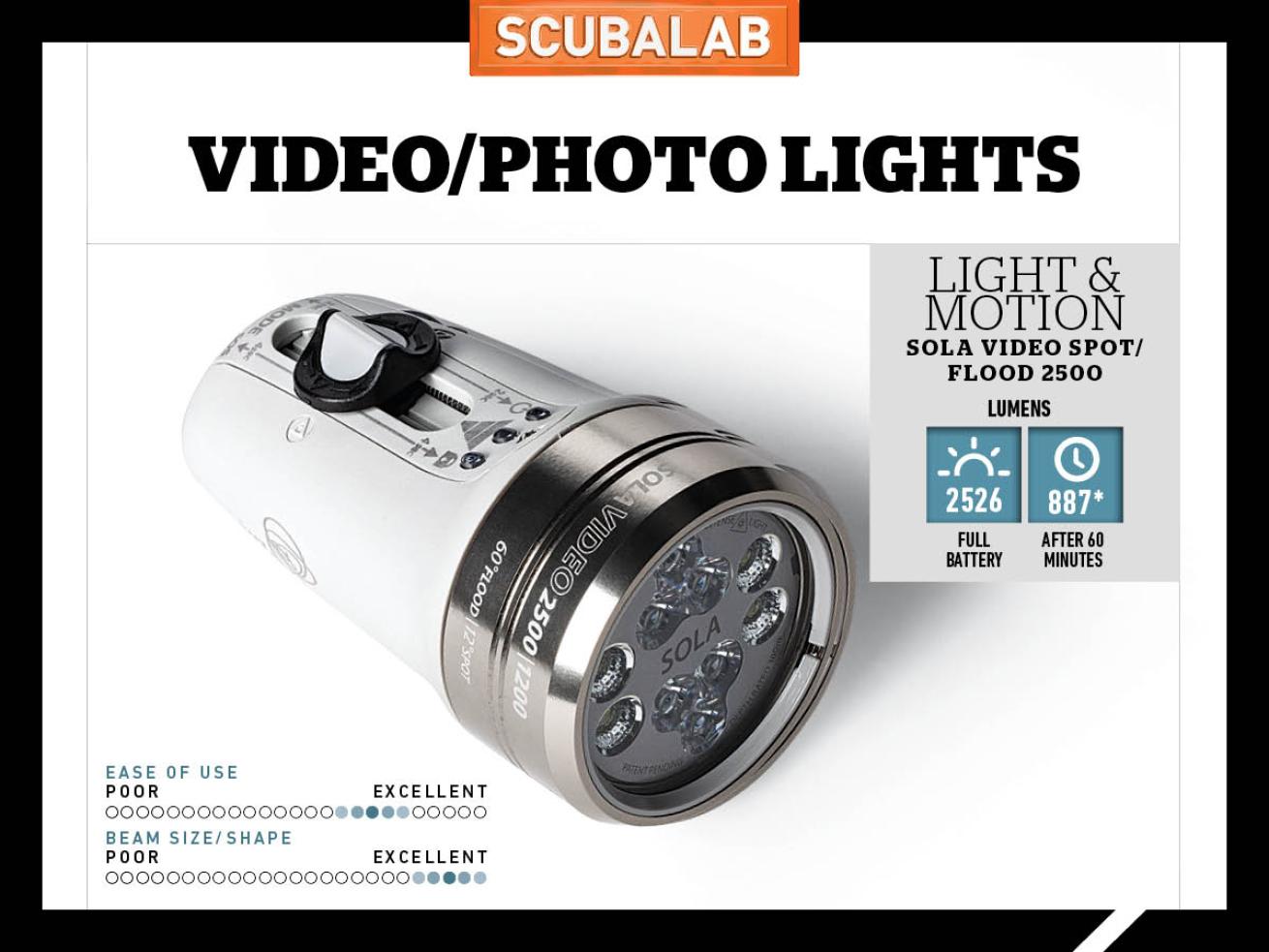
Jon WhittleThe video mode on this model is "Insanely bright," outputting 2,500 lumens.
Outwardly similar to the Sola Dive 1200 Spot, this model adds a video flood mode that pumps out a whopping 2,500 lumens. In clear water on a night dive, toggling between the 12-degree spot and 60-degree flood beams prompted test diver comments like, “Insanely bright.” Test divers also rated it excellent for beam size and shape and for light output. Easy to operate, the Sola Video Spot/Flood has an intuitive sliding switch that toggles between power levels, spot and flood beam, and SOS flash that twists 90 degrees to lock. A multicolored, three-light indicator on the top shows power and battery levels, and doubles as a charge indicator. While a little power-hungry in top-output mode, it will run for hours on more-modest power settings, and is an incredibly versatile option for video, camera or straight dive use.
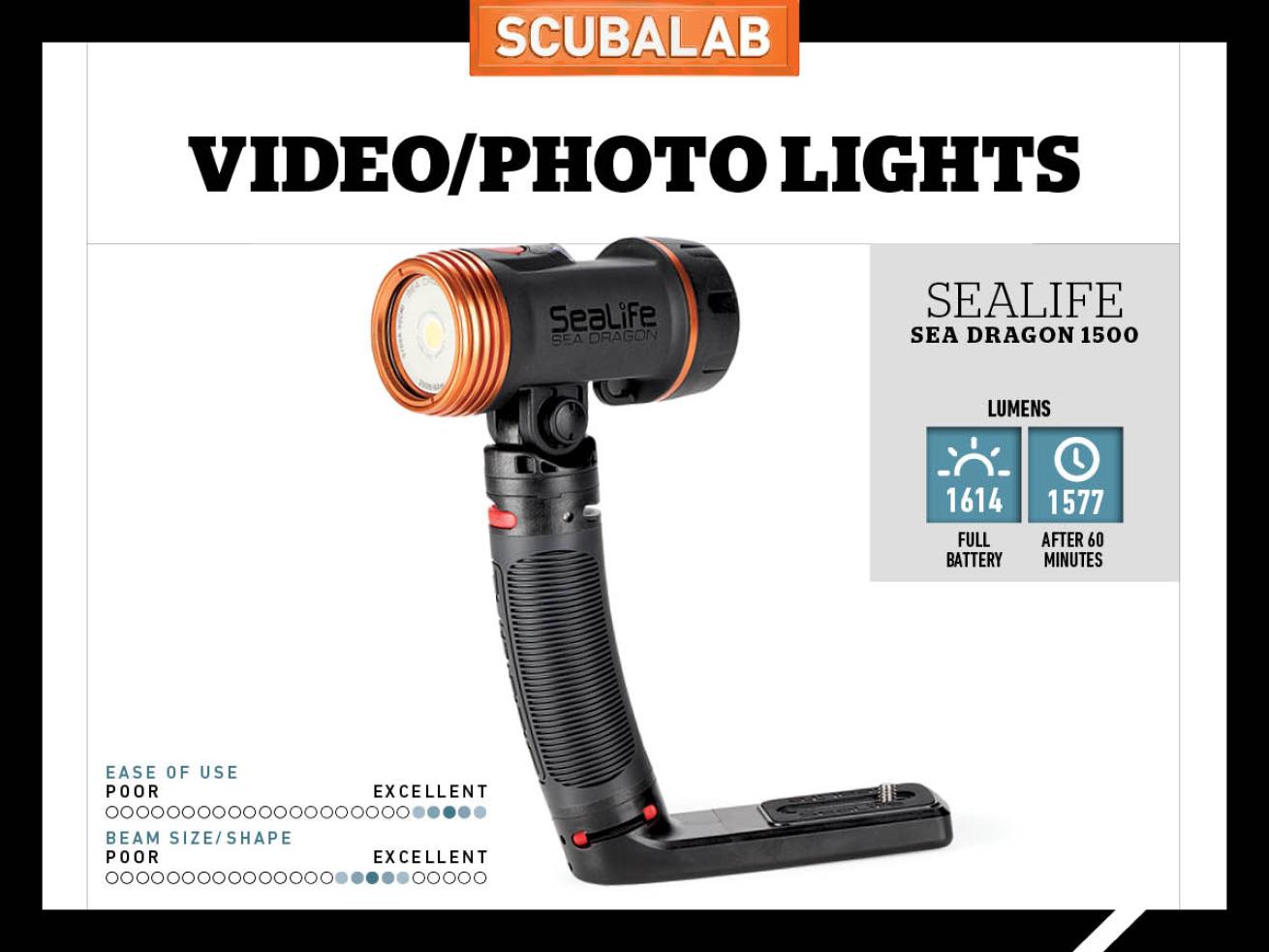
Jon WhittleThis light is great for photo and video use and is easily attached to a selection of grips, arms, and trays.
Designed for photo and video use, the Sea Dragon 1500 uses SeaLife’s Flex-Connect system for easy attachment to a selection of grips, arms and trays (it comes with a grip and a tray for a small camera and a GoPro camera adapter). Simple to use, it has a big red button on the top that toggles between 100, 50 and 25 percent power, and strobe and SOS flash modes, while three power indicator lights along the top display battery level. Like its stablemates in the Sea Dragon line, the 1500 has a well-built feel, with an anodized-aluminum light head and a built-in swivel mount that adjusts easily and stays in place. Though smaller than a soda can, this light put out well above its advertised output in our lab test — even after burning for an hour on its rechargeable Li-ion battery. Testers awarded it excellent scores for ease of use, light output and offering a useful range of power levels.
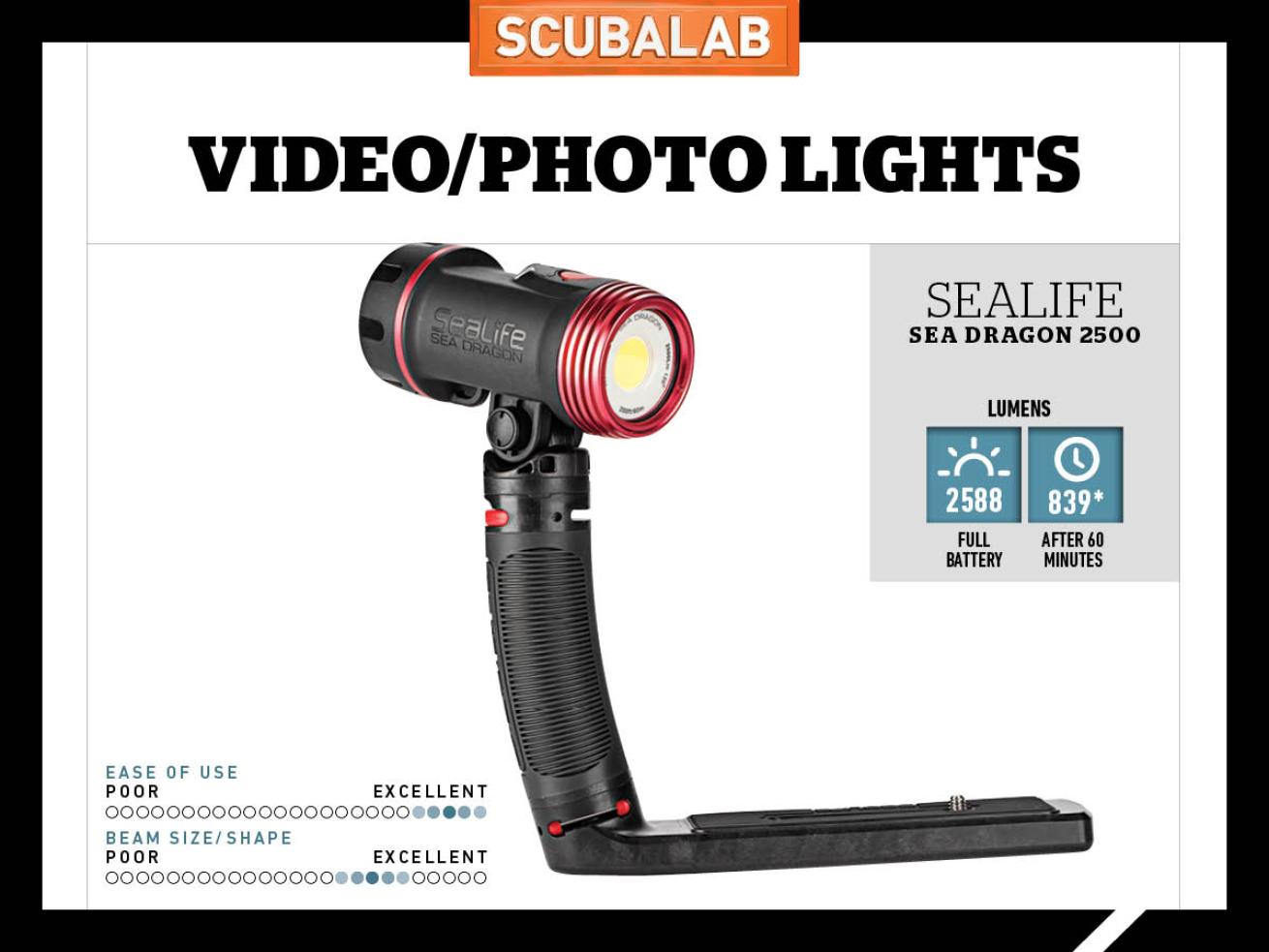
Jon WhittleThis photo/video light is intuitive and extremely powerful.
The Sea Dragon 2500 is what happens when you take the Sea Dragon 1500 and squeeze in another 1,000 lumens. The result, as one tester noted, is “like the sun.” It shares with the 1500 the same intuitive single push-button switch, three-light battery-level indicator, and three power levels with strobe and SOS flash. So it was not surprising that the 2500 also received excellent ratings from test divers for ease of use, light output and useful power levels. It put out well over its rated 2,500 lumens with a full battery, and was able to burn as claimed for 60 minutes on high power before the battery-level indicator blinked a low-power warning and would operate only at reduced power; at half power it puts out 1,200 lumens for two hours. While its 80-degree (underwater) beam is aimed at photo or video use, more than one test diver noted that with a pistol grip or hand mount, it'd make a killer broad-beam dive light.

Jon WhittleA mini flashing marker to keep track of your dive buddy.
This mini flashing marker light makes it easy to keep track of your buddy — and vice versa — on night dives. It twists on and burns for 12 hours on user-replaceable CR1220 batteries. It comes with a key ring and a plastic clip to attach to your gear, and operates to 100 meters.

Jon WhittleThis dive light is compact and rugged, with two power settings and an emergency mode.
Just 3.5 inches long, this sub-compact fits in a pocket and puts out 220 lumens of light. It has full- and half-power settings and an emergency flash mode. Powered by a single CR123 battery, it’s made of rugged aluminum, has an overpressure valve and is waterproof to 120 meters.
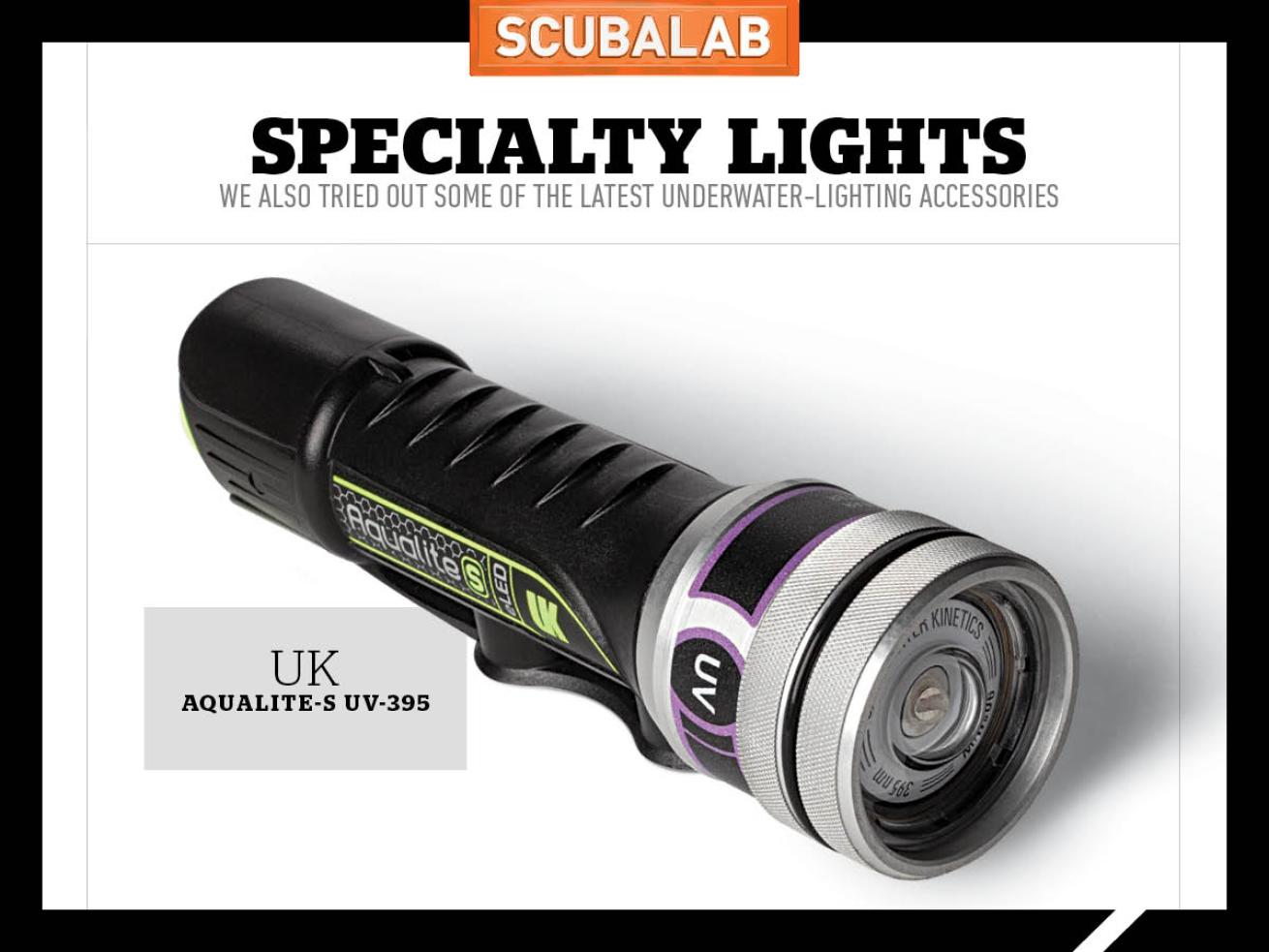
Jon WhittleThis UV light is great for causing marine life to fluoresce.
UV dive lights aren’t new, but this one has a new twist — an interchangeable light head. The “395” refers to the wavelength of the light; it’s nearly invisible to the naked eye but still causes marine life to fluoresce. That means you can see the effect without needing a yellow filter.

